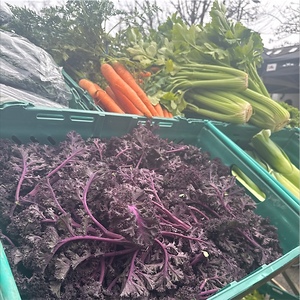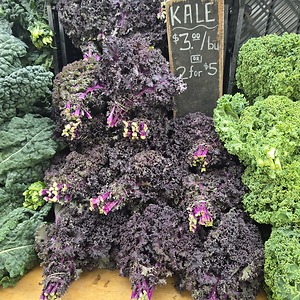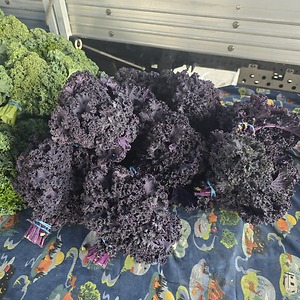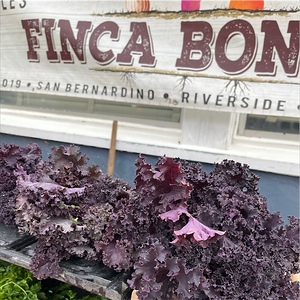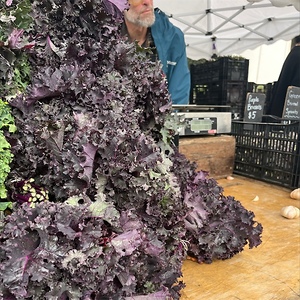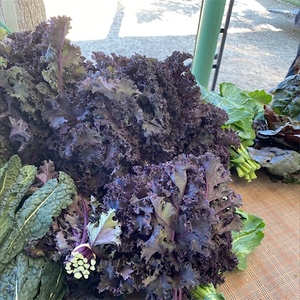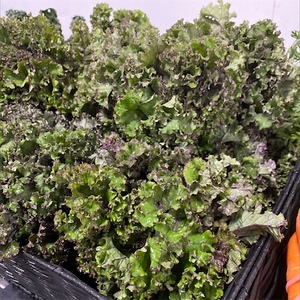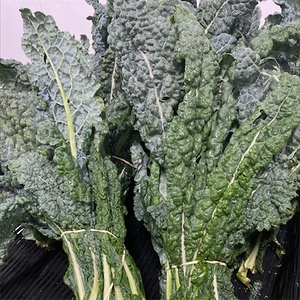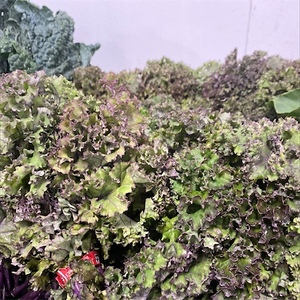

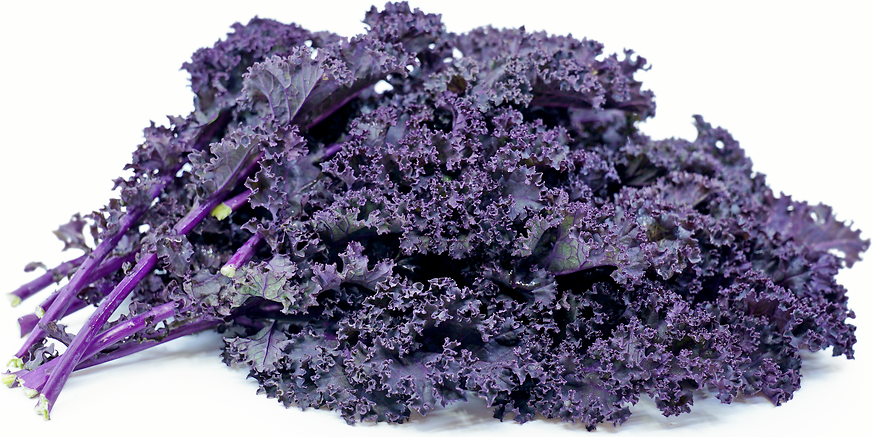
Redbor Kale
Estimated Inventory, bunch : 0
This item was last sold on : 12/01/22
Description/Taste
Redbor kale can be distinguished from other kale varieties simply by its deep red and maroon color. The Redbor kale has frilly, curled leaves that have deep purple stems and veins running throughout. Some plants are entirely magenta, thought at times, others may have leaves that are tinged with green. Growing between 18 to 24 inches in length, the Redbor kale offers a mild cabbage-like flavor and crisp texture. When cooked it becomes tender and nutty with a mild earthy sweetness.
Seasons/Availability
Redbor kale is available in the late winter and early spring.
Current Facts
Redbor kale is a variety of Brassica oleracea that is prized for its vibrant purple and magenta colored leaves. It is among other colored kale varieties including Scarlet kale and Olympic Red, but unique in its almost complete red coloring from rib to leaf tip. Redbor kale grows well in the spring and fall as a cool-weather crop, and when planted in winter, the temperature triggers Redbor's young green leaves to turn red.
Nutritional Value
Redbor kale is an excellent source of vitamins A and C, iron, calcium, magnesium, potassium, protein, carbohydrates and dietary fiber.
Applications
Redbor kale may be used similarly to other green varieties, however it does lose some of its intense pigmentation when cooked. Its bright magenta color is best retained if left raw, but should be finely shredded to mitigate its hardy texture. The leaves may be steamed, braised, stewed, fried, sautéed, and even baked like a chip. They are great in hardy soups which contain smoked meats, potatoes, beans or barley. Other flavor affinities include, bay leaf, oregano, thyme, red pepper flake, nutmeg, shallots, onion, tomato, sweet potatoes, cheddar cheese, Parmesan, cream, roasted meats, chorizo sausage, pancetta and chicken.
Ethnic/Cultural Info
Vegetables with purple pigmentation, such as Redbor kale, are rich in anthocyanins and other phyto-chemials that are known to fight cancer. Considered a “superfood” by some, Redbor kale contains some of the highest anti-oxidant levels of many other fruit or vegetable.
Geography/History
Redbor kale will grow in warmer climates, though cooler weather suits this flowering kale’s deep pigmentation much better. It isn't quite as cold hardy as common green kale, but thrives in fertile, well-drained soils. Commercial kale crops are harvested between forty and fifty-five days after planting with new plantings every two weeks in order to provide year round supplies. A cool weather annual, Redbor kale's cold-hardy personality makes its flavor even sweeter after a light frost.
Recipe Ideas
Recipes that include Redbor Kale. One
| Lisa is Cooking |
|
Greens with Red Beans, Cilantro, and Feta Cheese |
Podcast



